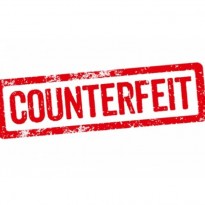Anti-Counterfeiting Labelling Strategies: Protecting Your Brand
Posted on 01/08/2018 in New Product Launches, by Jon

The Economic Impact of Counterfeit Goods: Anti-Counterfeiting Labelling Strategies as a Solution?
Counterfeiting is not just a minor inconvenience—it’s a global economic crisis that threatens businesses, consumers, and entire industries. To put this into perspective, let’s examine the scale of the problem:
Most Recent Statistics
- Global Counterfeiting Losses: Estimated at £380 billion annually
- Luxury Brand Losses: £22 billion in 2017 through internet sales alone
- Regional Example: A single seizure in the West Midlands in 2018 involved:
- 1,800 counterfeit items
- Estimated value: £30,000
- Brands targeted: Football merchandise, Gucci, Louis Vuitton
Understanding the Counterfeiting Ecosystem
The Cat-and-Mouse Game of Brand Protection
Traditionally, brands have employed a reactive approach to combating counterfeiting:
Conventional Security Measures
- Holographic Labels
- Temporary solution
- Quickly replicated by sophisticated counterfeiters
- Short-lived effectiveness
- Manufacturing Specifics
- Unique stitching techniques
- Specialized manufacturing processes
- Subtle brand-specific details
🔍 Consumer Challenge: Most consumers lack the expertise to identify these nuanced differences.
Advanced Anti-Counterfeiting Labeling Strategies
Principles of Effective Brand Protection
Key Requirements for Next-Generation Labeling
- Difficult to replicate
- Easy to verify
- Scalable across multiple product types
- Cost-effective implementation
- Accessible to manufacturers, retailers, and consumers
Innovative Labeling Technologies
1. Digital Authentication Solutions
- Blockchain-Enabled Tracking
- Immutable product history
- Transparent supply chain
- Instant verification
- QR Code Integration
- Unique digital fingerprint
- Real-time authentication
- Consumer-accessible verification
2. Advanced Material Technologies
- Nanotechnology Tagging
- Microscopic markers
- Invisible to naked eye
- Scientifically complex to reproduce
- Chemical Signature Embedding
- Molecular-level authentication
- Requires specialized detection equipment
- Virtually impossible to replicate
3. Smart Packaging Approaches
- NFC-Enabled Labels
- Tap-to-verify functionality
- Instant authentication via smartphone
- Dynamic information updates
- Augmented Reality Verification
- Interactive product authentication
- Engaging consumer experience
- Additional brand storytelling opportunity
Cross-Industry Applications
Versatile Protection Strategies
Applicable Across Multiple Sectors:
- Luxury Fashion
- Electronics
- Pharmaceuticals
- Spirits and Wine
- Sporting Goods
- Event Ticketing
- Automotive Parts
Implementation Considerations
Strategic Deployment Framework
- Comprehensive Vulnerability Assessment
- Technology Selection
- Pilot Testing
- Scalable Rollout
- Continuous Monitoring
Cost-Benefit Analysis
- Initial Investment vs. Potential Savings
- Brand Reputation Protection
- Consumer Trust Enhancement
Emerging Technological Frontiers
Future of Brand Authentication
- Artificial Intelligence Detection
- Machine Learning Pattern Recognition
- Quantum Encryption Techniques
Conclusion: A Proactive Approach to Brand Protection
Effective anti-counterfeiting is not about creating an impenetrable fortress, but about:
- Making counterfeiting economically unviable
- Empowering consumers
- Creating transparent value chains
How vulnerable is your brand to counterfeiting? What unique authentication challenges does your industry face? Transform your approach from reactive defense to proactive brand empowerment today by contacting our dedicated team of labelling experts.

